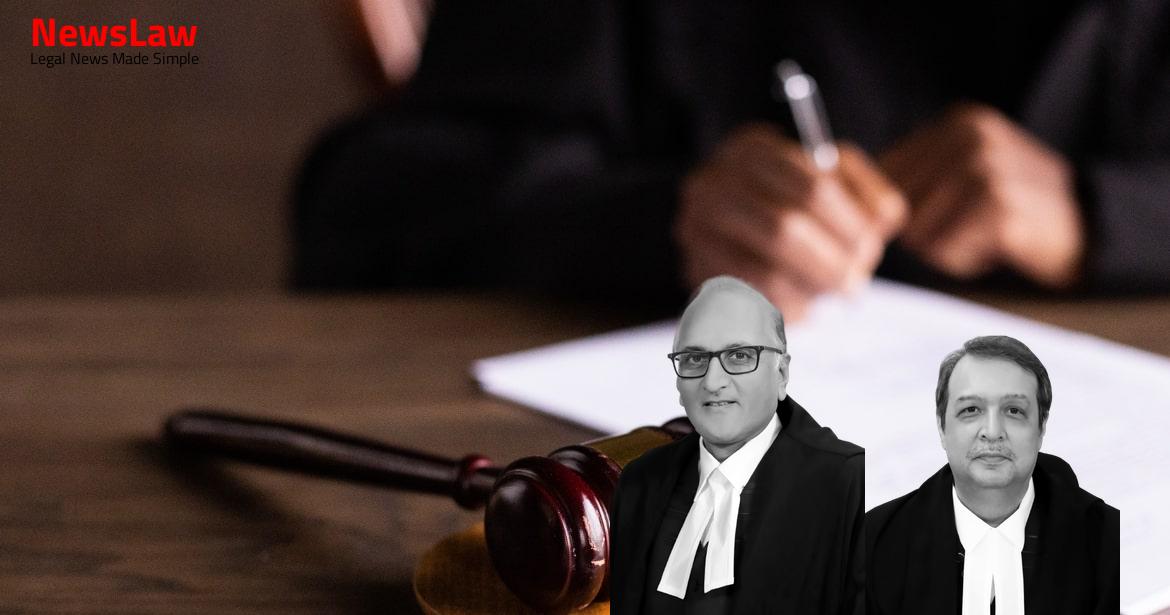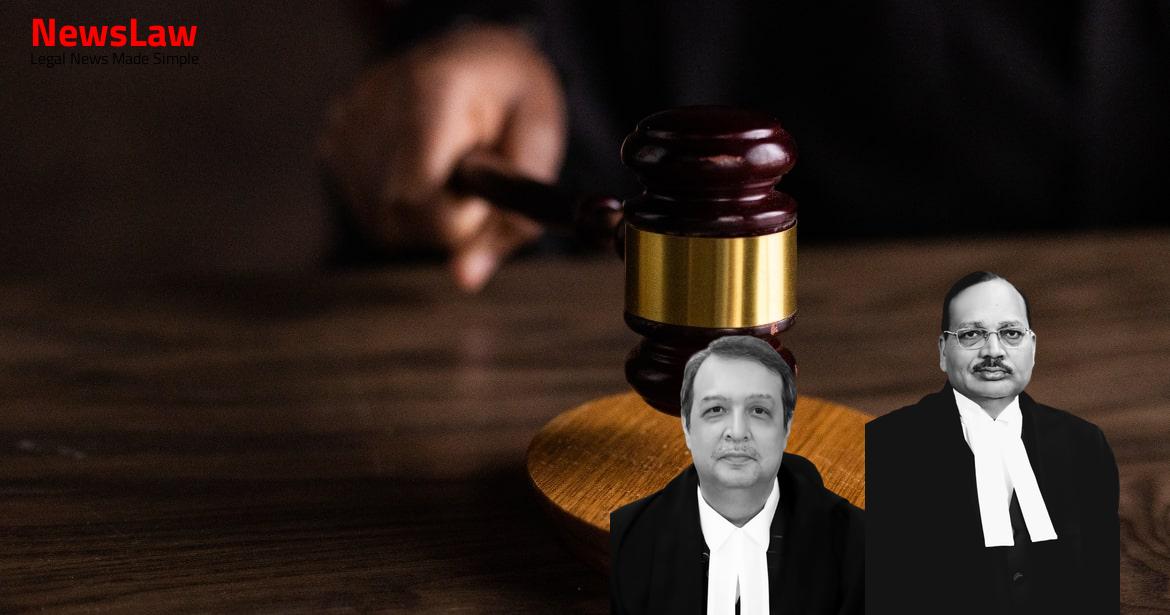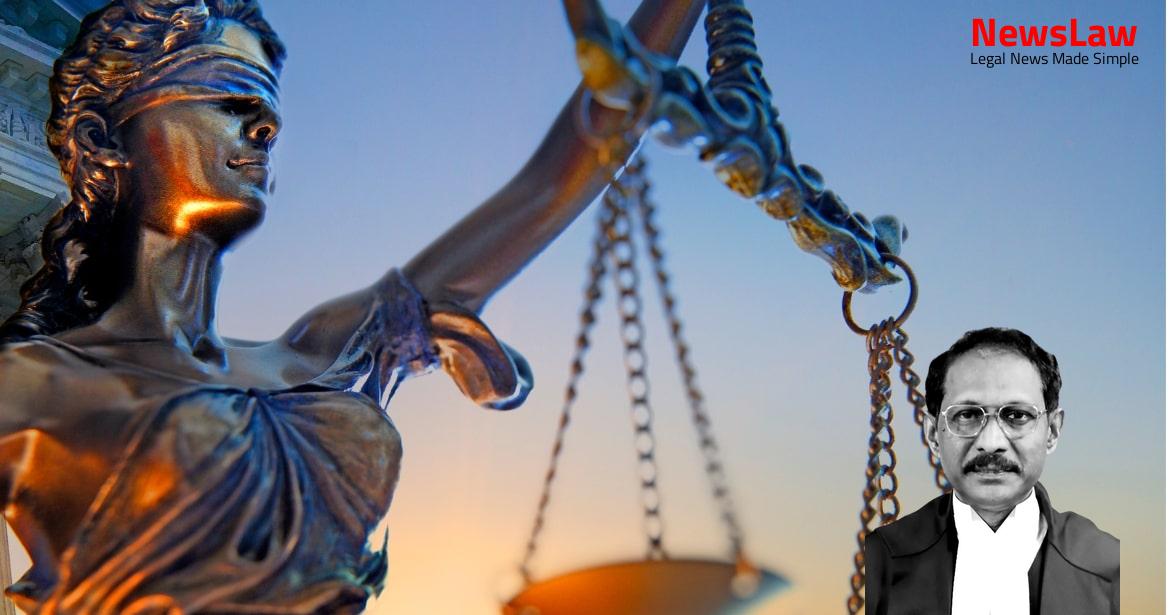The legal case delves into the intricate analysis conducted by the court regarding the existence of arbitration agreements in a complex scenario. The court’s thorough examination of the arbitration agreement’s validity and legality showcases the importance of understanding the legislative framework allocating jurisdiction between courts and Arbitral Tribunals. Stay tuned to delve deeper into the nuances of the court’s role in determining the existence of arbitration agreements in intricate legal matters.
Facts
- The Respondent alleged that it had raised an invoice on 27 September, 2014, for payment of Rs.28.09 lakhs as an advance for consultancy charges including service tax.
- The Appellant, Pravin Electricals Pvt. Ltd., operates in key industrial and commercial retail sectors and provides services for electrical supplies.
- An online tender was invited by Chief Engineer, South Bihar Power Distribution Company Ltd. for appointment of implementing agencies.
- The Appellant submitted its technical and financial bid and was awarded the work on 22 September, 2014.
- The Respondent, Galaxy Infra and Engineering Pvt. Ltd., is in the business of providing consultancy services.
- Email dated 30.06.2017 is on record where a final invoice was sent by the petitioner with a reference to the Agreement dated 07.07.2014.
- The Respondent supplied a copy of the alleged Agreement dated 7 July, 2014 to the Appellant on 14 May, 2018.
- The Respondent claimed commission under the Agreement for facilitating the Appellant in getting a contract.
- The Respondent filed a petition under Section 11(6) of the 1996 Act for appointment of a Sole Arbitrator based on the alleged Agreement dated 7 July, 2014.
- The Delhi High Court directed the Respondent to produce the original of the Consultancy Agreement dated 7 July, 2014.
- The learned Single Judge of the Delhi High Court referenced the Consultancy Agreement dated July 7, 2014, and the correspondence between the parties.
- The correspondence included communication between SBPDCL and the Respondent in the case.
- The judgment examined the contents of these documents as part of the case analysis.
Also Read: Limitation Period in Arbitration Disputes: Court’s Legal Analysis
Issue
- Whether the party making the application has approached the appropriate High Court should be decided.
- Whether the Chief Justice or his designate will be the one to make the decision on this issue.
- It is important to determine if the party making the application has followed the correct legal procedure in approaching the appropriate High Court.
Also Read: Interpretation of Section 43B: Debentures vs. Interest Payment
Arguments
- Petitioner argued that the respondent had sent a Draft Consultancy Agreement on 15.07.2014 containing an Arbitration Clause, indicating the parties must be referred to Arbitration.
- Petitioner pointed out that PCTSPL was a sub-contractor of the respondent, not the petitioner.
- Petitioner highlighted that payments were made in accordance with the agreement terms, and the respondent acted as a go-between in obtaining a bid for the Appellant.
- Learned counsel argued that the alleged Consultancy Agreement dated 7 July 2014 was concocted and not supported by evidence.
- Petitioner disputed the existence of the alleged Consultancy Agreement and the subsequent arbitration agreement.
- Email correspondence and payment details were presented by the petitioner to support their arguments.
- Petitioner’s counsel questioned the validity of the agreement based on the location of notarization and the nature of negotiations post-alleged agreement.
- Overall, the petitioner sought to discredit the respondent’s claims regarding the existence of an agreement between the parties.
Also Read: Judicial Scrutiny of Arbitrary Taxation Statutes
Analysis
- The Law Commission recommended the addition of Section 11(6-A) in response to judgments such as Patel Engg. Ltd. and Boghara Polyfab.
- The court’s role under Section 11 is to examine the existence of an arbitration agreement only, leaving other issues to the arbitrator.
- The Vidya Drolia case dealt with the meaning of non-arbitrability and the decision-maker for such issues.
- The Law Commission’s Report suggested amendments to Section 11(7) to make High Court decisions final and non-appealable.
- The Supreme Court emphasized limited judicial intervention in arbitration matters to ensure expeditious resolution.
- Judicial interpretation aligning Section 11(6A) with the prima facie test in Sections 8(1) and 11(6) was noted.
- Section 37(1) and Section 11(6) lack alignment in terms of appealability.
- Amendments by Act 3 of 2016 and Act 33 of 2019 highlighted the balance between court intervention and arbitration autonomy.
- The Court’s role in pre-arbitral stages under Sections 8, 9, and 11 can impact the conduct of arbitration proceedings.
- The judgment focused on the careful consideration required before concluding the existence of an arbitration agreement in complex cases.
- Existence of an arbitration agreement presupposes a valid agreement which would be enforced by the court by relegating the parties to arbitration.
- An agreement evidenced in writing has no meaning unless the parties can be compelled to adhere and abide by the terms.
- Legalistic and plain meaning interpretation would be contrary to the contextual background including the definition clause and would result in unpalatable consequences.
- A reasonable and just interpretation of “existence” requires understanding the context, the purpose, and the relevant legal norms applicable for a binding and enforceable arbitration agreement.
- An arbitration agreement exists only when it is valid and legal as per the legislative scheme allocating jurisdiction between the courts and the Arbitral Tribunal.
- The court exercises judicial powers at the reference stage to determine the “existence” and “validity” of the arbitration agreement.
- The court should undertake a detailed and full review only when necessary, as referral proceedings are preliminary and summary and not a mini trial.
- Prima facie examination at the reference stage is to weed out manifestly invalid arbitration agreements and non-arbitrable disputes.
- The court has the authority to decide whether an arbitration agreement exists, and if so, refer the dispute to arbitration, leaving the determination of the arbitration agreement to the Arbitral Tribunal.
- The court should discourage parties from using the referral proceedings as a delaying tactic and maintain the integrity and efficiency of arbitration as an alternative dispute resolution mechanism.
- The issues that the Chief Justice or his designate may choose to decide include whether the claim is dead or live, and whether the parties have concluded the contract by recording satisfaction of their mutual rights or by receiving final payment without objection.
- The issues that should be left exclusively to the Arbitral Tribunal include whether a claim falls within the arbitration clause and the merits of any claim involved in the arbitration.
- The scope and nature of judicial intervention under Sections 8 and 11 of the Arbitration and Conciliation Act should be consistent, focusing on the existence or nullity of the arbitration agreement.
- The judicial intervention is limited to situations where the court finds the arbitration agreement non-existent or null and void.
- The amendments recommended to Sections 8 and 11 introduce a two-step process for judicial authorities to consider applications seeking reference to arbitration.
- The amendments ensure that the determination of the existence of the arbitration agreement and the appointment of arbitrators are final and non-appealable.
- The amendments also aim for a conclusive determination on the validity of the arbitration agreement.
- The Amendment Act, 2015 brought changes to provisions related to appointment of arbitrators, timeframes for making awards, fee schedules, and neutrality of arbitrators.
- The amendments seek to streamline the process of determining the existence of the arbitration agreement and referring parties to arbitration.
- The amendments empower the High Court to make appointments and decisions regarding arbitration agreements effectively.
- The amendments clarify the scope of the court’s examination regarding the validity of arbitration agreements, focusing on specific criteria.
- The Law Commission Report discussed the changes made to Sections 8 and 11 of the Act to address previous difficulties and ensure smoother arbitration processes.
- An appeal can be maintained under Section 37 in cases of refusal to refer parties to arbitration or refusal to appoint an arbitrator.
- Explanation 3 encourages High Courts to promote institutionalized arbitration by professional Indian or international arbitral institutes.
- Prima facie review can only lead to one conclusion – deeper consideration left to Arbitrator
- Arbitrator to examine documentary evidence and cross-examine witnesses
- Impugned judgment of Delhi High Court set aside regarding existence of Arbitration Agreement
Decision
- Justice G.S. Sistani, a retired Delhi High Court Judge, appointed as the Sole Arbitrator
- No influence from the observations made by the court
- Preliminary issue to determine the existence of an Arbitration Agreement
- Merit of the case to be decided only if the agreement is found to exist
Case Title: PRAVIN ELECTRICALS PVT. LTD Vs. GALAXY INFRA AND ENGINEERING PVT. LTD. (2021 INSC 166)
Case Number: C.A. No.-000825-000825 / 2021



